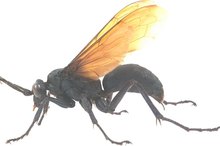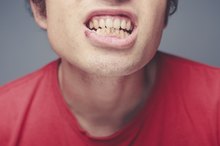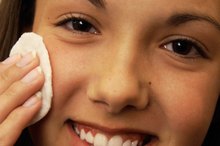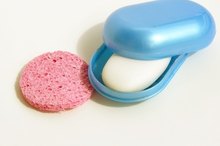How to Take the Swelling and Pain out of a Bee or Wasp Sting
A bee sting can happen any time and any place. It's a good idea to have options for treating the pain and swelling associated with a sting. The following treatment methods are easy, inexpensive and use items readily available in your home.
If you get stung and the stinger is still embedded in your skin, CAREFULLY remove the stinger. Try not to pinch or squeese the stinger out so you can prevent additional venom from being released.
Remedy for a Swollen Lip From a Bug Bite
Learn More
After you have removed the stinger, try the following based on what you have available to you at that time.
BAKING SODA with water - make a paste - apply liberally to site of sting.
How to Remove Bandage Adhesive From Skin
Learn More
TOOTHPASTE - basic mint (not gel) - apply liberally to site of sting.
Tomato slice - Place slice on bee sting.
LEMON or LEMON JUICE - squeeze juice on sting site (best for wasps and also works well for mosquitoes).
VINEGAR - squeeze on sting site (also good for wasps).
ANTI-PERSPIRANT - spread over sting site - the aluminum chlorohydrate reduces the effect of venom.
MUD - good if you are camping or have no other options.
Tried and true - ALOE - You can also use aloe LIP BALM.
Tips
If possible, take Benadryl with you (Liquid Benadryl is preferred because it starts working faster) - Benadryl helps control the swelling and itching
Warnings
If you are ALLERGIC to bees, make sure you have an epi-Pen with you wherever you go. If stung, use the epi-Pen and get to a hospital asap. Know the WARNING SIGNS of a severe allergic reaction. Severe reactions occur between 15-20 minutes after the sting. Sneezing, itching, trouble breathing, swelling of throat, coughing and congestion.
Related Articles
References
- Pucca MB, Cerni FA, Oliveira IS, et al. Bee updated: current knowledge on bee venom and bee envenoming therapy. Front Immunol. 2019;10:2090. Published 2019 Sep 6. doi:10.3389/fimmu.2019.02090
- Senthilkumaran S, Balamurugan N, Sweni S, Thirumalaikolundusubramanian P. Cavernous sinus thrombosis following bee sting. Int J Crit Illn Inj Sci. 2011;1(2):167–168. doi:10.4103/2229-5151.84808
- Schiener M, Graessel A, Ollert M, Schmidt-Weber CB, Blank S. Allergen-specific immunotherapy of Hymenoptera venom allergy - also a matter of diagnosis. Hum Vaccin Immunother. 2017;13(10):2467–2481. doi:10.1080/21645515.2017.1334745
- Przybilla B, Ruëff F. Insect stings: clinical features and management. Dtsch Arztebl Int. 2012;109(13):238–248. doi:10.3238/arztebl.2012.0238
- Brown TC, Tankersley MS. The Sting of the Honeybee: An Allergic Perspective. Annals of Allergy, Asthma & Immunology. 2011;107:463-471. doi:10.1016/j.anai.2011.09.015.
Tips
- If possible, take Benadryl with you (Liquid Benadryl is preferred because it starts working faster) - Benadryl helps control the swelling and itching
Warnings
- If you are ALLERGIC to bees, make sure you have an epi-Pen with you wherever you go. If stung, use the epi-Pen and get to a hospital asap.
- Know the WARNING SIGNS of a severe allergic reaction. Severe reactions occur between 15-20 minutes after the sting. Sneezing, itching, trouble breathing, swelling of throat, coughing and congestion.
Writer Bio
This article was written by the CareerTrend team, copy edited and fact checked through a multi-point auditing system, in efforts to ensure our readers only receive the best information. To submit your questions or ideas, or to simply learn more about CareerTrend, contact us [here](http://careertrend.com/about-us).








